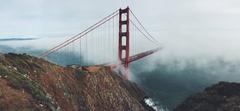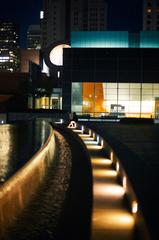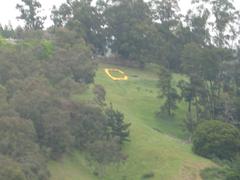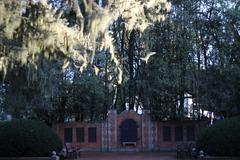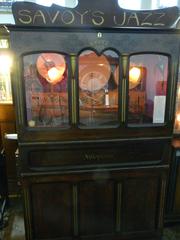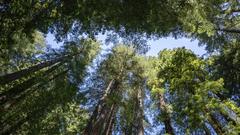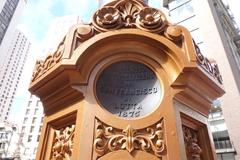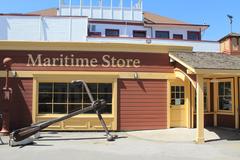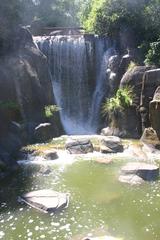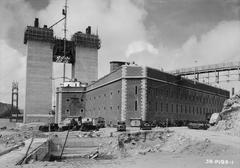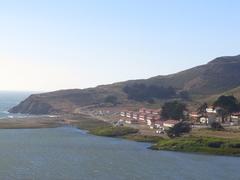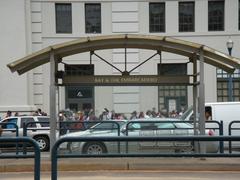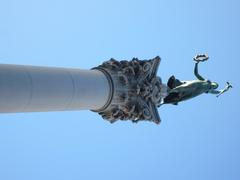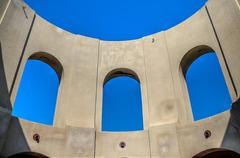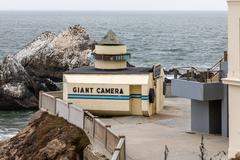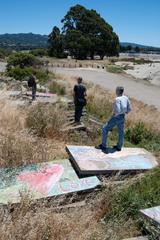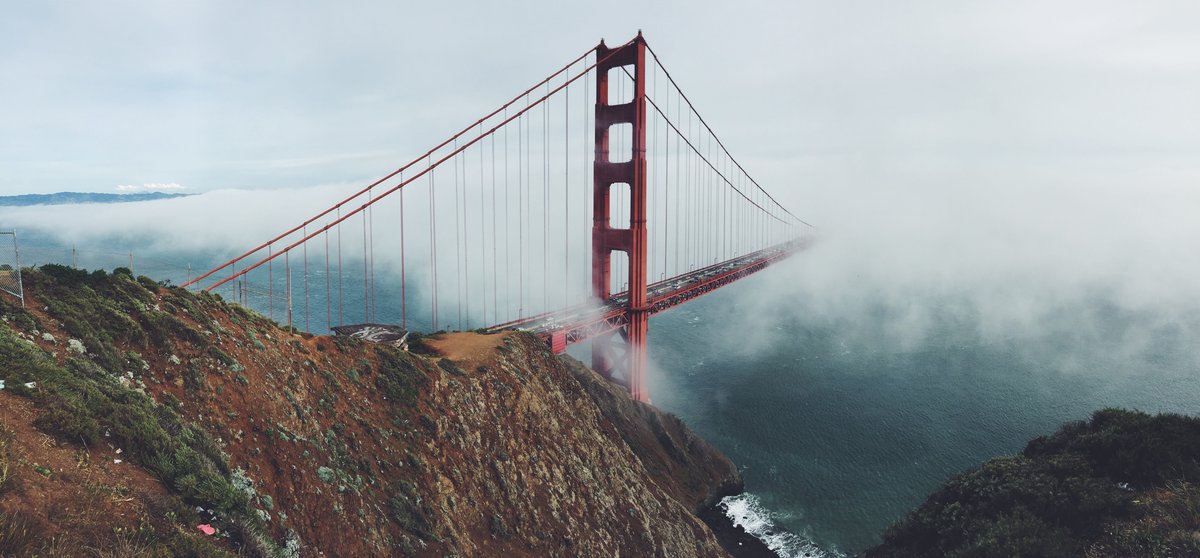
Golden Gate Bridge Visiting Hours, Tickets, and Travel Tips
Date: 16/07/2024
Introduction
The Golden Gate Bridge, an architectural marvel and a symbol of American resilience, stands as one of the most iconic landmarks in the United States. Spanning the Golden Gate Strait, this majestic bridge connects San Francisco to Marin County and has captivated millions of visitors since its completion in 1937. Initially considered an impossible feat due to the strait’s strong tidal currents, deep waters, and frequent fog, the Golden Gate Bridge represents a triumph of human ingenuity and determination. The visionary efforts of engineer Joseph Strauss, coupled with the innovative designs of Leon Moisseiff and Charles Alton Ellis, brought this dream to fruition, creating what was once the longest suspension bridge span in the world (History.com). The bridge’s distinctive International Orange color, chosen for its visibility in fog, and its Art Deco design add to its aesthetic appeal and historical significance (PBS). This guide will provide you with comprehensive insights into the history, visitor information, travel tips, and nearby attractions, ensuring you make the most of your visit to this legendary structure.
Table of Contents
- [History of the Golden Gate Bridge](#history-of-the-golden-gate-bridgehistory-of-the-golden-gate-bridge)
- [Early Proposals and Initial Challenges](#early-proposals-and-initial-challengesearly-proposals-and-initial-challenges)
- [Visionary Leadership - Joseph Strauss](#visionary-leadership---joseph-straussvisionary-leadership---joseph-strauss)
- [Design and Engineering Innovations](#design-and-engineering-innovationsdesign-and-engineering-innovations)
- [Construction Milestones](#construction-milestonesconstruction-milestones)
- [Opening and Public Reception](#opening-and-public-receptionopening-and-public-reception)
- [Historical Significance](#historical-significancehistorical-significance)
- [Visitor Information](#visitor-informationvisitor-information)
- [Golden Gate Bridge Visiting Hours](#golden-gate-bridge-visiting-hoursgolden-gate-bridge-visiting-hours)
- [Golden Gate Bridge Tickets](#golden-gate-bridge-ticketsgolden-gate-bridge-tickets)
- [Travel Tips and Nearby Attractions](#travel-tips-and-nearby-attractionstravel-tips-and-nearby-attractions)
- [Best Time to Visit](#best-time-to-visitbest-time-to-visit)
- [Nearby Attractions](#nearby-attractionsnearby-attractions)
- [Accessibility](#accessibilityaccessibility)
- [Special Events and Guided Tours](#special-events-and-guided-toursspecial-events-and-guided-tours)
- [Photographic Spots](#photographic-spotsphotographic-spots)
- [FAQ](#faqfaq)
- [Conclusion](#conclusionconclusion)
- [References](#referencesreferences)
History of the Golden Gate Bridge
Early Proposals and Initial Challenges
The idea of constructing a bridge across the Golden Gate Strait, the entrance to San Francisco Bay from the Pacific Ocean, was first proposed in the early 20th century. The strait, approximately 1.6 kilometers (1 mile) wide, presented significant engineering challenges due to its strong tidal currents, deep water, and frequent fog. Initial proposals were met with skepticism, as many believed that building a bridge in such a location was impossible.
Visionary Leadership - Joseph Strauss
The turning point came with the involvement of Joseph Strauss, a bridge engineer who became the chief advocate for the project. Strauss initially proposed a hybrid cantilever-suspension bridge design, but this was later modified to a full suspension bridge by consulting engineers Leon Moisseiff and Charles Alton Ellis. Strauss’s relentless advocacy and innovative vision were crucial in overcoming the initial resistance and technical challenges.
Design and Engineering Innovations
The final design of the Golden Gate Bridge, completed by Moisseiff and Ellis, incorporated several groundbreaking engineering techniques. The bridge’s main span, measuring 1,280 meters (4,200 feet), was the longest suspension bridge span in the world at the time of its completion. The two main towers, standing 227 meters (746 feet) above the water, were also record-breaking in height.
The bridge’s Art Deco design, characterized by its sleek lines and geometric shapes, was both functional and aesthetically pleasing. The iconic International Orange color was chosen to enhance visibility in San Francisco’s frequent fog and to complement the natural surroundings.
Construction Milestones
Construction of the Golden Gate Bridge began on January 5, 1933, and was completed on April 19, 1937. The project faced numerous challenges, including harsh weather conditions, strong currents, and the Great Depression. Despite these obstacles, the bridge was completed ahead of schedule and under budget, with a total cost of approximately $35 million (equivalent to about $700 million in 2024 dollars).
One of the most significant achievements during construction was the implementation of safety measures, which were unprecedented at the time. Strauss insisted on the use of a safety net beneath the bridge, which saved the lives of 19 workers who became known as the “Halfway to Hell Club.”
Opening and Public Reception
The Golden Gate Bridge officially opened to pedestrian traffic on May 27, 1937, and to vehicular traffic the following day. The opening celebrations were a grand affair, with nearly 200,000 people walking across the bridge on the first day. The bridge quickly became a symbol of American ingenuity and resilience, capturing the public’s imagination and earning widespread acclaim.
Historical Significance
The Golden Gate Bridge holds a significant place in American history and engineering. It was designated a National Historic Landmark in 1987, recognizing its importance as an engineering marvel and a cultural icon. The bridge has also been featured in numerous films, books, and artworks, further cementing its status as a symbol of San Francisco and the United States.
Visitor Information
Golden Gate Bridge Visiting Hours
The Golden Gate Bridge is open to pedestrians during daylight hours. The exact visiting hours can vary, so it’s advisable to check the Golden Gate Bridge Highway and Transportation District’s official website for the most up-to-date information. Vehicular traffic is allowed 24/7, but tolls are collected only in the southbound direction (toward San Francisco).
Golden Gate Bridge Tickets
There is no fee for walking or biking across the Golden Gate Bridge. However, if you plan to drive, be prepared to pay a toll. The toll rates vary depending on the type of vehicle and payment method used. For details on current toll prices and payment options, visit the official website.
Travel Tips and Nearby Attractions
Best Time to Visit
The best time to visit the Golden Gate Bridge is during the spring and fall when the weather is generally mild and the fog is less frequent. Early mornings and late afternoons offer the best lighting for photography.
Nearby Attractions
- Golden Gate Park - A sprawling urban park offering gardens, museums, and recreational activities.
- Alcatraz Island - Take a ferry to this historic island, once home to a notorious federal prison.
- Sausalito - A charming town just across the bridge, known for its art galleries, boutiques, and waterfront dining.
Accessibility
The Golden Gate Bridge is wheelchair accessible, with ramps leading to the pedestrian walkways. Accessible parking spaces are available on both sides of the bridge. Additionally, the bridge offers audio tours and Braille signage for visually impaired visitors.
Special Events and Guided Tours
Throughout the year, the Golden Gate Bridge hosts various special events, including marathons, bike rides, and historical tours. Guided tours are available for those interested in learning more about the bridge’s history, engineering, and significance. For a schedule of events and information on guided tours, visit the official website.
Photographic Spots
The Golden Gate Bridge offers numerous photographic opportunities. Popular spots include:
- Battery Spencer - Provides a stunning view of the bridge with the San Francisco skyline in the background.
- Fort Point National Historic Site - Located at the southern end of the bridge, offering unique angles from below the bridge.
- Marin Headlands - Offers panoramic views of the bridge, especially beautiful at sunrise and sunset.
FAQ
How long does it take to walk across the Golden Gate Bridge?
Walking across the bridge takes approximately 30-45 minutes one way, depending on your pace and how often you stop to take photos.
Are pets allowed on the Golden Gate Bridge?
Pets are allowed on the pedestrian walkways, but they must be on a leash at all times.
Can I bike across the Golden Gate Bridge?
Yes, biking is allowed on the Golden Gate Bridge. Cyclists have designated lanes separate from pedestrian walkways.
Conclusion
Visiting the Golden Gate Bridge is a must-do experience when in San Francisco. Its rich history, stunning architecture, and breathtaking views make it a highlight for tourists and locals alike. Whether you’re interested in learning about its construction, planning a visit, or exploring nearby attractions, the Golden Gate Bridge offers something for everyone. Be sure to check out the Golden Gate Bridge Highway and Transportation District’s official website for the latest information and updates.
References
- History.com. (n.d.). Golden Gate Bridge. Retrieved from https://www.history.com/topics/landmarks/golden-gate-bridge
- PBS. (n.d.). American Experience: Golden Gate Bridge. Retrieved from https://www.pbs.org/wgbh/americanexperience/features/goldengate-bridge/
- SFGate. (2012). Golden Gate Bridge 75th Anniversary Celebration. Retrieved from https://www.sfgate.com/bayarea/article/Golden-Gate-Bridge-75th-anniversary-celebration-3586760.php
